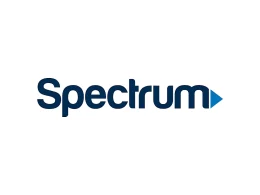Introduction
Attention employers! Are you struggling to keep your Gen Z workforce engaged? Look no further, because we have the solution for you. Employee engagement is crucial for any successful business, and keeping your team motivated and invested can be a challenge. However, with challenging projects, you can not only engage your employees but also boost their skills and productivity. In this blog post, we will dive into how to achieve employee engagement through projects while exploring their pros and cons along the way. So sit back, relax, and get ready to learn some tips on how to keep your Gen Z workforce engaged with challenging projects!
The Importance of Employee Engagement
Employee engagement is a crucial factor in ensuring the success of any organization. Engaged employees are more productive, motivated, and committed to their work. They have higher job satisfaction levels and are less likely to leave the company.
Engagement is not just about employee satisfaction; it’s also about aligning personal goals with organizational objectives. Fully engaged employees understand how their work contributes to the larger picture and strive towards achieving common goals.
Moreover, employee engagement fosters a positive workplace culture where individuals feel valued and supported. This leads to better communication, teamwork and collaboration among team members, which ultimately results in better outcomes for the company as a whole.
It’s essential for companies to prioritize employee engagement through various initiatives such as recognition programs, training opportunities, open feedback channels etc., because when employees feel appreciated and invested in their jobs they produce successful results that benefit everyone involved.
The Different Types of Engagements
Engagement is not a one-size-fits-all approach. There are different types of engagement that work for different people and situations. Here are some of the most common types of engagements:
1. Behavioral engagement: This type of engagement refers to an employee’s involvement in the physical and emotional aspects of their job. They may show up on time, complete tasks thoroughly, and exhibit positive attitudes towards their colleagues.
2. Emotional engagement: This type of engagement relates to how an employee feels about their job or organization. Employees who are emotionally engaged feel passionate about what they do, take pride in their work, and have a deep sense of loyalty to the company.
3. Cognitive engagement: This type of engagement involves employees’ mental effort expended on understanding and carrying out tasks related to their job role.
4. Social Engagement: Encouraging social interactions between team members can create stronger bonds among them improving collaboration while reducing workplace loneliness & isolation.
It’s important for employers to understand these different types of engagements so they can tailor strategies that resonate with each individual employee’s interests or strengths, keeping them motivated throughout challenging projects
Achieving Engagement Through Projects
One way to keep your Gen Z workforce engaged is through projects. Projects are a great way to challenge your employees and give them the opportunity to learn new skills while working towards a common goal.
When it comes to achieving engagement through projects, it’s important to choose projects that align with your company’s goals and values. This will help ensure that your employees feel like they’re contributing meaningful work.
Another key factor in engaging employees through projects is providing them with autonomy. Allow them to take ownership of their work and make decisions on how best to approach certain tasks. This not only fosters creativity but also encourages accountability.
Communication is also crucial when it comes to project engagement. Be sure to provide regular feedback, both positive and constructive, throughout the project timeline. Encouraging open dialogue creates trust between you and your team, ultimately leading to increased job satisfaction.
Don’t forget about recognition! Celebrate milestones achieved by individuals or teams during the project process – this can be as simple as verbal praise or more formal recognition programs such as bonuses or promotions.
Creating an environment where challenging yet achievable projects are consistently provided for Gen Z workers allows for personal growth within themselves along with growth within the company itself.
The Pros and Cons of Projects
Projects can be a great way to engage your Gen Z workforce, but like any strategy, there are pros and cons to consider. One advantage of projects is that they provide employees with a clear goal to work towards. This can help them stay focused and motivated, as they know what they’re working towards.
Another benefit of projects is that they allow for creativity and innovation. By giving employees the freedom to approach a problem in their own unique way, you may discover new solutions or ideas that wouldn’t have been possible otherwise.
However, it’s important to keep in mind that not all projects will be successful. Sometimes the goals may be too unrealistic or the resources available may not be sufficient for completion. In addition, some team members may struggle with project management skills or communication issues which could lead to delays or errors.
Projects also come with deadlines which can create stress and pressure on team members who feel overwhelmed by the workload. It’s essential to balance expectations without putting undue pressure on individuals leading up-to-project completions.
While there are potential drawbacks when using project-based strategies; we believe if managed effectively then companies can experience significant benefits from this approach!
Tips for Successful Project Management
Successful project management is crucial to keeping your Gen Z workforce engaged. Here are some tips for ensuring that your projects run smoothly and effectively:
1. Set Clear Goals: Make sure everyone on the team understands what the project aims to achieve, and how their individual contributions will help reach those goals.
2. Plan Ahead: Create a detailed project plan that outlines all of the tasks involved, deadlines, and dependencies. This will help you stay organized and ensure that nothing falls through the cracks.
3. Communicate Effectively: Keep everyone on the team informed about progress, changes in plans, or any issues that arise along the way.
4. Encourage Collaboration: Create opportunities for team members to work together and share ideas throughout the course of a project.
5. Provide Feedback: Regularly check in with team members to provide feedback on their work so far and offer suggestions for improvement.
6. Celebrate Successes: When milestones are reached or goals are accomplished, take time as a team to celebrate these successes together!
By following these tips for successful project management, you can keep your Gen Z workforce engaged while also achieving great results for your organization!
Conclusion
In today’s fast-paced business environment, keeping a Gen Z workforce engaged is critical to success. Engaged employees are more productive, innovative and loyal. They are also more likely to stay with the company for longer.
Engagement can be achieved through various methods, but projects offer unique benefits that help keep younger workers engaged. Projects allow employees to take ownership of their work and develop new skills while driving innovation within the organization.
However, successful project management requires careful planning and execution. Employers must identify challenging yet achievable projects that align with their employee’s interests and skills while providing adequate resources and support.
By understanding the importance of employee engagement, employers can leverage projects as a means of achieving this goal with their Gen Z workers. With proper planning and management practices in place, companies will not only foster an engaged workforce but also drive growth within their respective industries.












